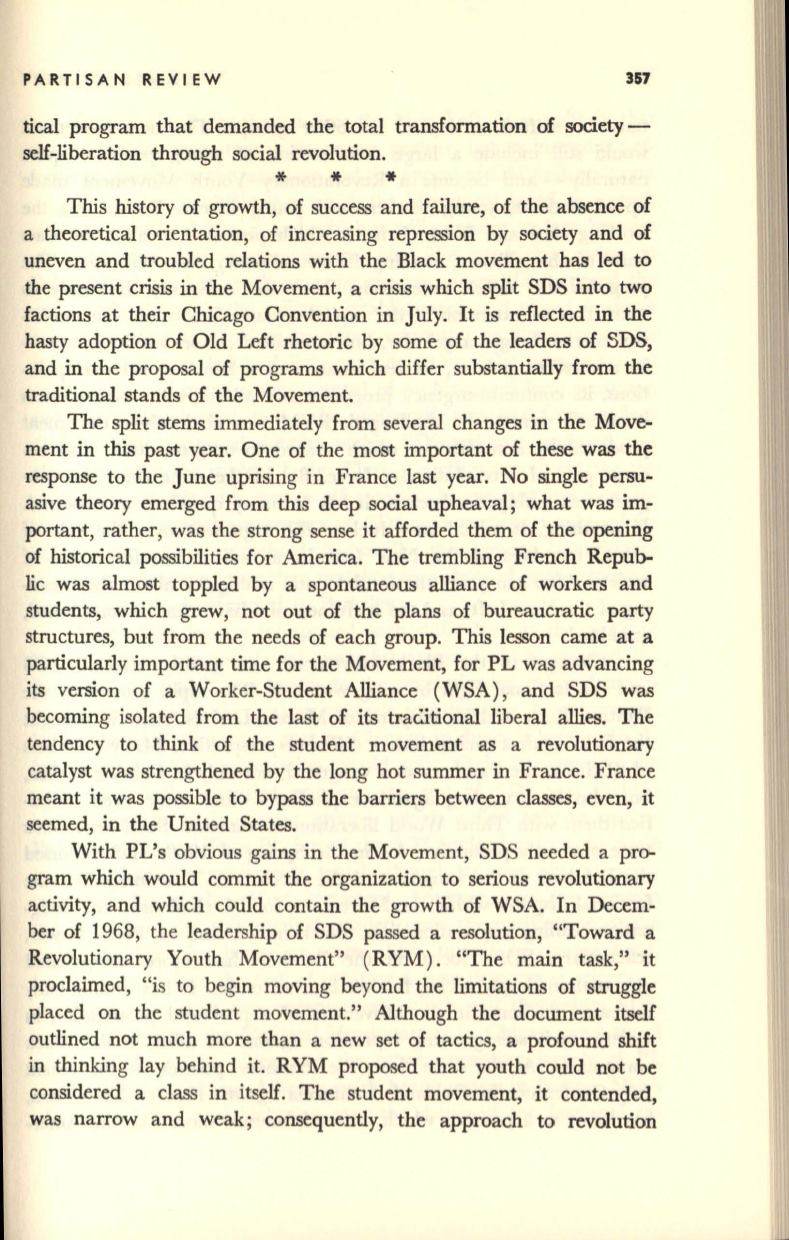
PARTISAN REVIEW
357
tical program that demanded the total transformation of society–
self-liberation through social revolution.
* *
*
This history of growth, of success and failure, of the absence of
a theoretical orientation, of increasing repression by society and of
uneven and troubled relations with the Black movement has led to
the present crisis
in
the Movement, a crisis which split SDS into two
factions at their Chicago Convention in July. It is reflected in the
hasty adoption of Old Left rhetoric by some of the leaders of SDS,
and
in
the proposal of programs which differ substantially from the
traditional stands of the Movement.
The split stems immediately from several changes in the Move–
ment in
this
past year. One of the most important of these was the
response to the June uprising
in
France last year. No single persu–
asive theory emerged from
this
deep social upheaval; what was
im–
portant, rather, was the strong sense it afforded them of the opening
of historical possibilities for America. The trembling French Repub–
lic was almost toppled by a spontaneous alliance of workers and
students, which grew, not out of the plans of bureaucratic party
structures, but from the needs of each group. This lesson came at a
particularly important time for the Movement, for PL was advancing
its version of a Worker-Student Alliance (WSA) , and SDS was
becoming isolated from the last of its trac:.itional liberal allies. The
tendency to think of the student movement as a revolutionary
catalyst was strengthened by the long hot summer
in
France. France
meant it was possible to bypass the barriers between classes, even, it
seemed, in the United States.
With PL's obvious gains in the Movement, SDS needed a pro–
gram which would commit the organization to serious revolutionary
activity, and which could contain the growth of WSA. In Decem–
ber of 1968, the leadership of SDS passed a resolution, "Toward a
Revolutionary Youth Movement" (RYM). "The main task," it
proclaimed, "is to begin moving beyond the limitations of struggle
placed on the student movement." Although the document itself
outlined not much more than a new set of tactics, a profound shift
in thinking lay behind it. RYM proposed that youth could not be
considered a class in itself. The student movement, it contended,
was narrow and weak; consequently, the approach to revolution


